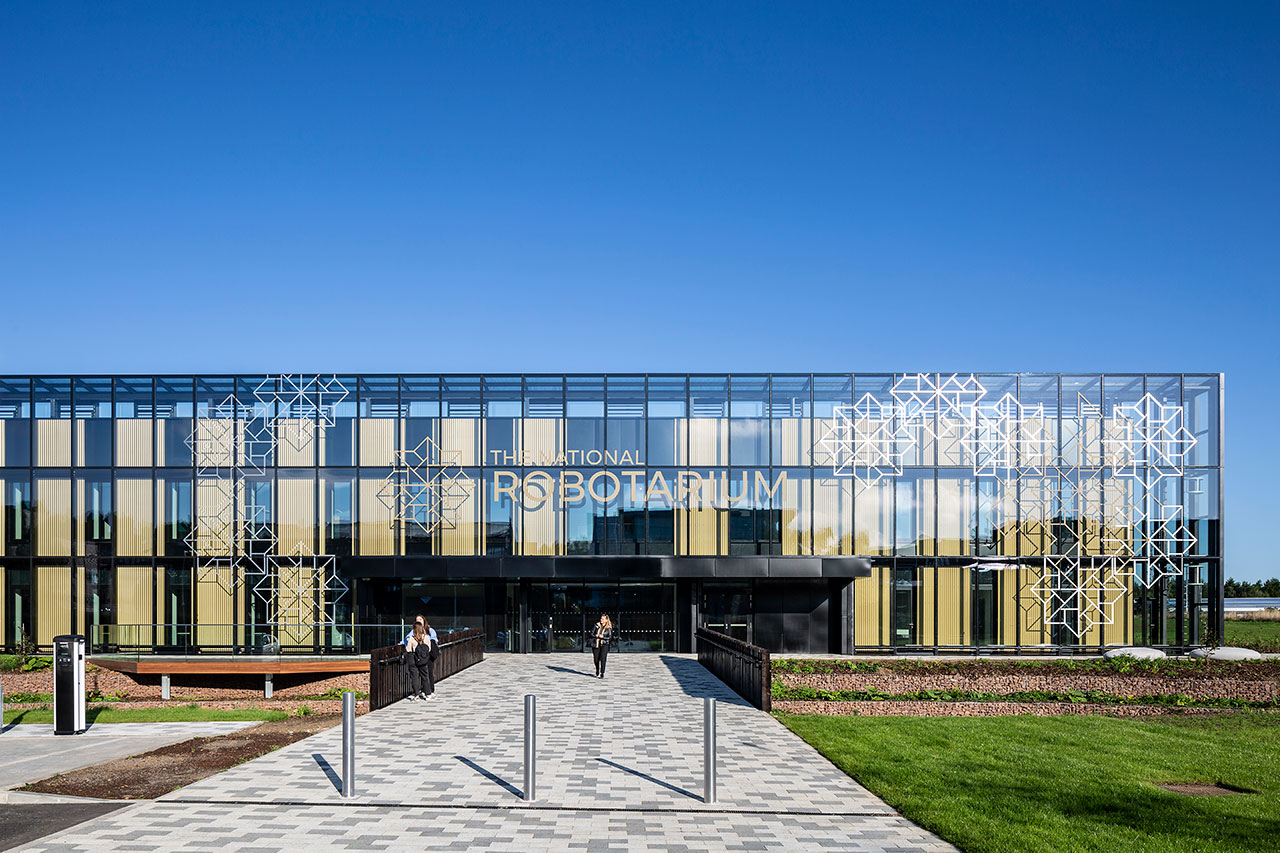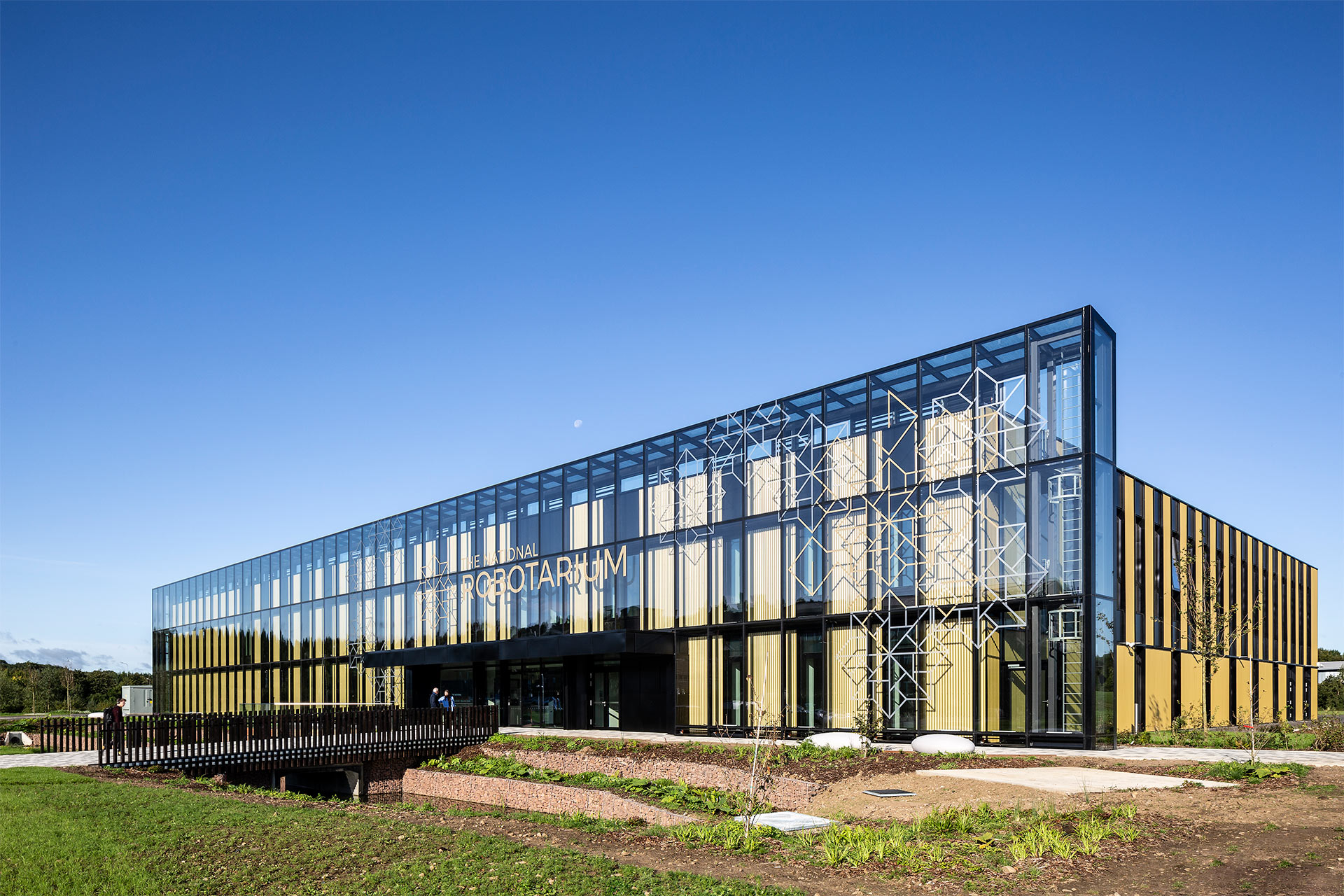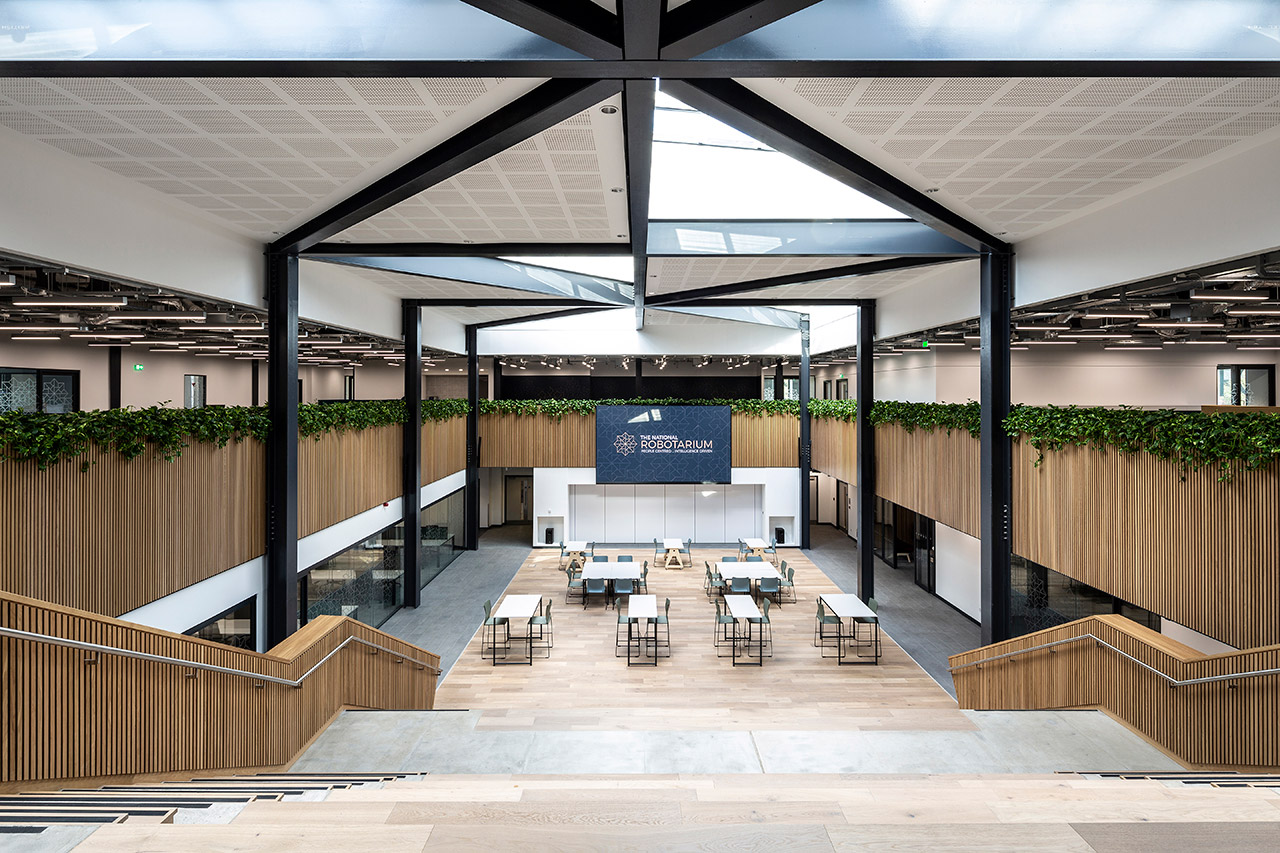The National Robotarium
"When you come into the Robotarium, you're going to feel light, you're going to feel energised and you're going to feel like anything is possible."
Pioneering Innovation
From the outset, Heriot-Watt University had a clear vision “to create the UK’s leading innovation hub for the practical application of robotics and autonomous systems”. A collaborative partnership between Heriot-Watt University, Edinburgh University and commercial partners, the UK’s first National Robotarium within the Heriot-Watt Riccarton Campus in the west of Edinburgh was commissioned. This new facility, the first of its kind, will provide a dedicated innovation hub for the acceleration of knowledge and developments within the robotic and autonomous system industry.
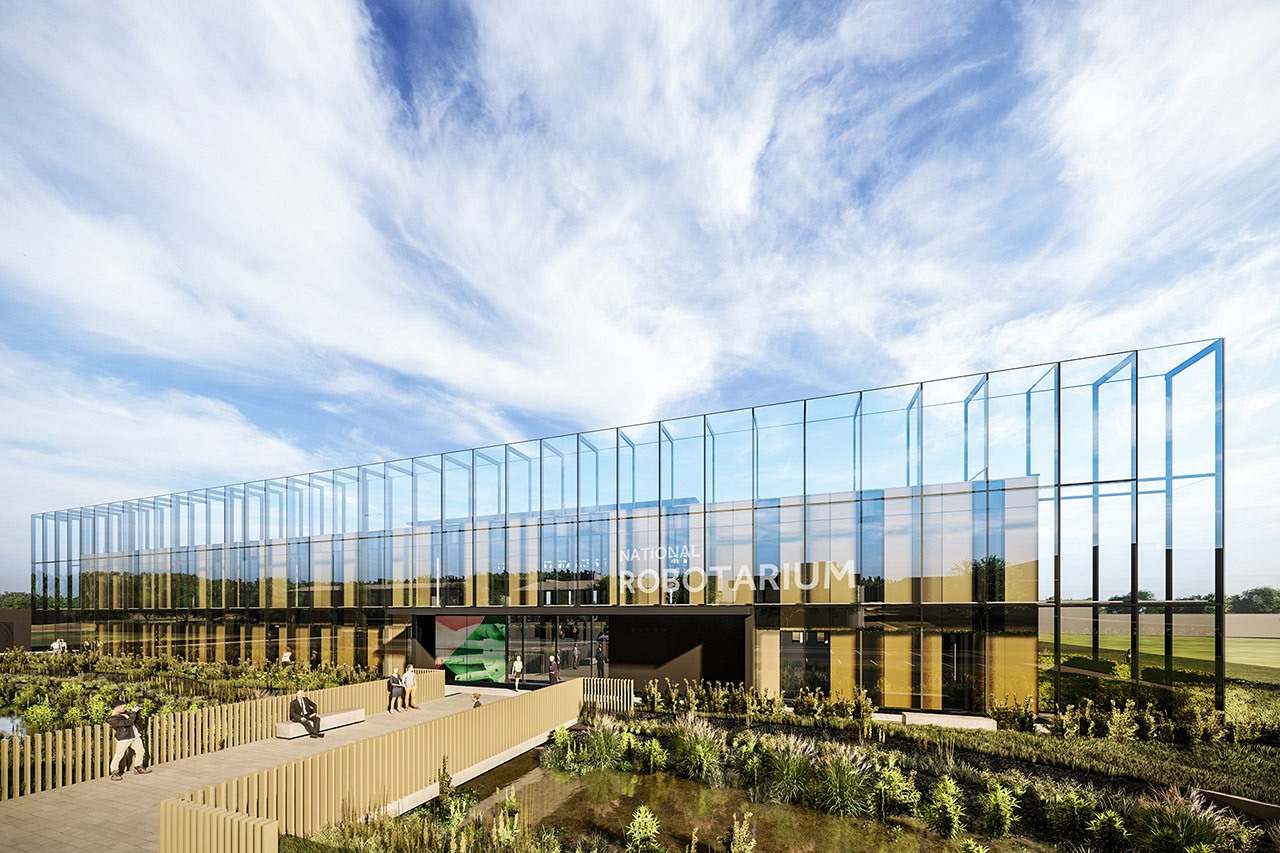
MLA were honoured to play a key role in this ‘once in a lifetime’ project, providing a full design service of strategic consultancy, architecture and interior design, from ideation to completion.
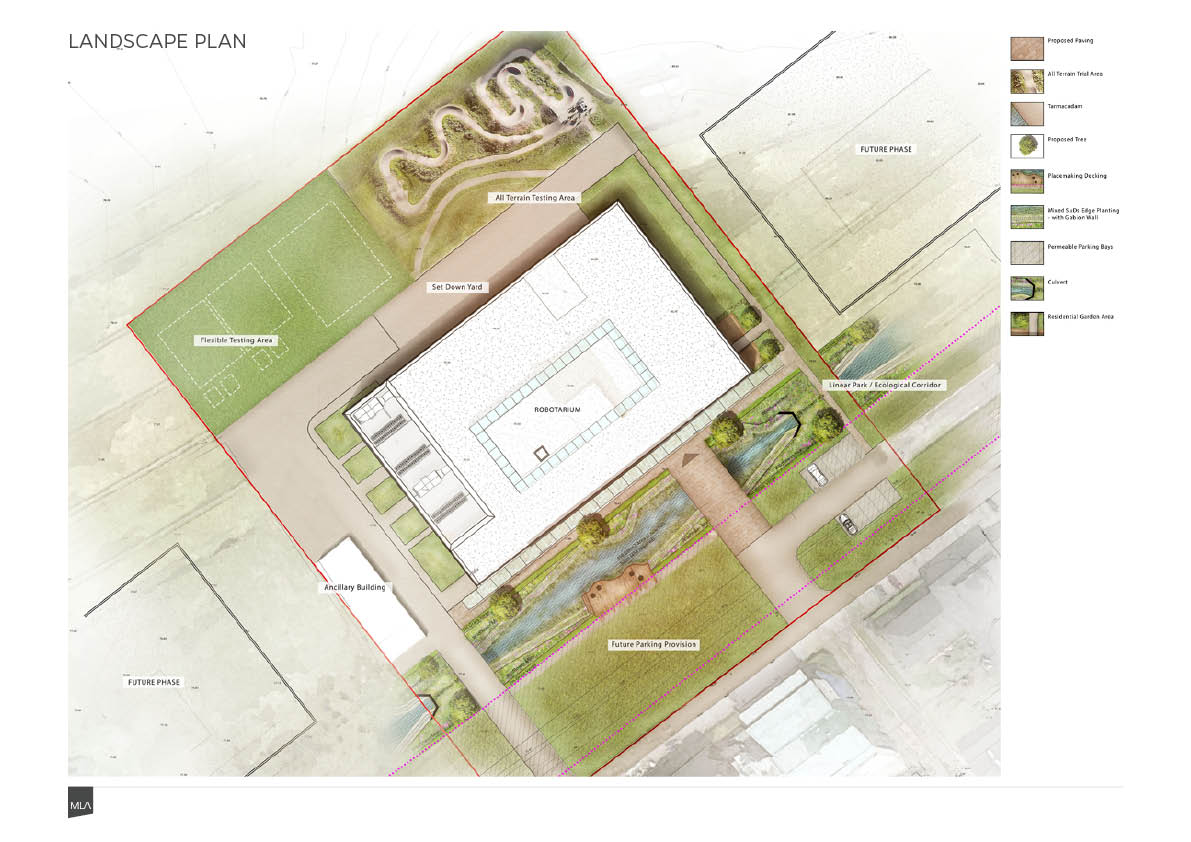
Design Approach
Designing the UK’s debut Robotarium required a high level of consultation with the end users to understand and refine the strategic brief and building requirements. In-depth departmental interviews and stakeholder workshops allowed us to define their unique lab configurations and map out adjacencies and shared space.
The building design provides a range of labs, office and flexible space for both academia and industry to work and collaborate under one roof.
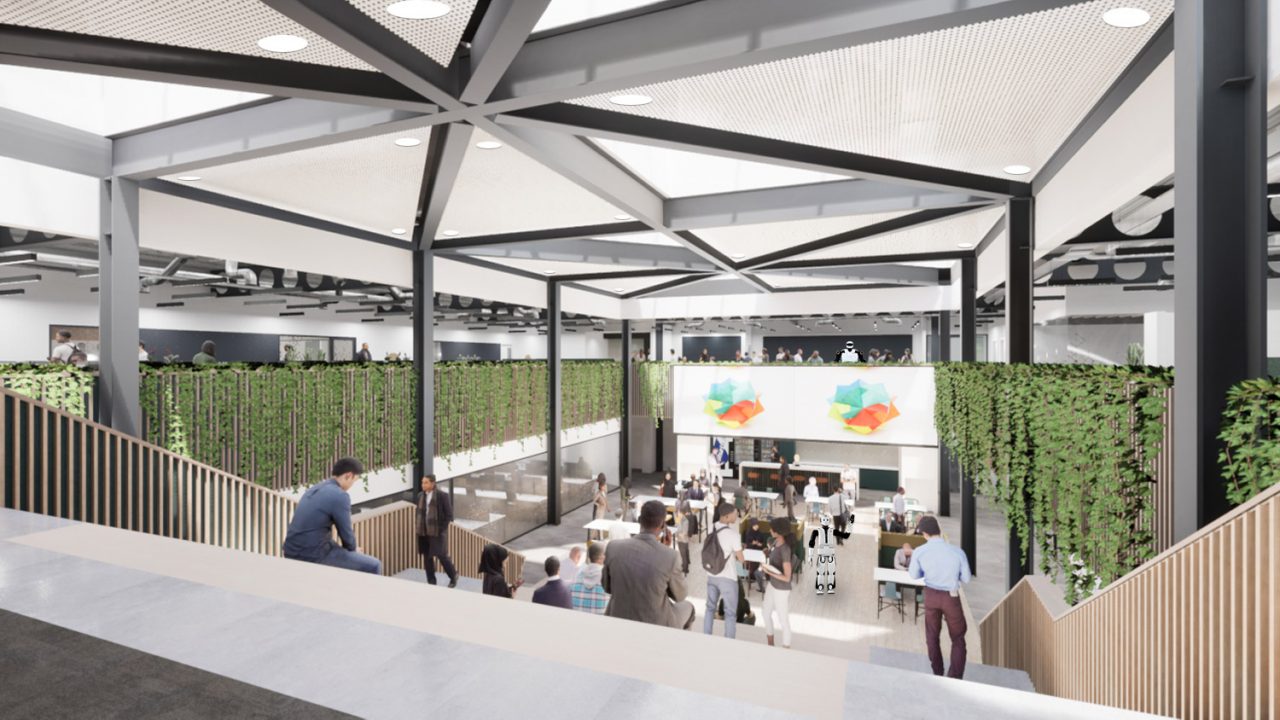
Working on large and small scale robotics and micro robotics used in a variety of applications within one centre, the layout promotes collaboration by placing the three faculties – RAS Labs (Robotic Autonomous Systems), HRI (Human Robotic Interactions) and Ultra Labs (Lasers) – around a central forum space; a place to gather for lectures, events, ad-hoc meetings and social connection.
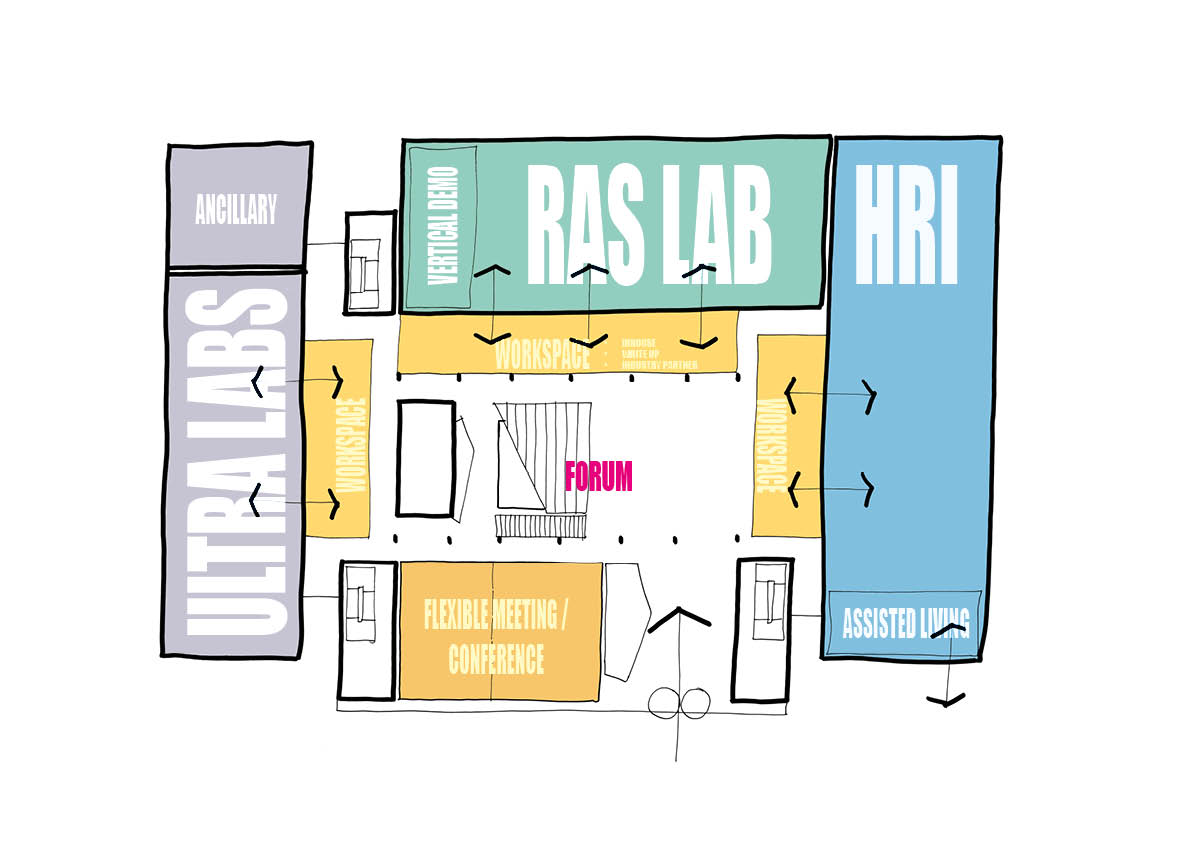
The RAS (Robotics & Autonomous Systems) labs focus on larger scale industrial robotics. The double height space can be used for testing on drones, and roller shutter doors open to the back of the building allowing large equipment into the space for research and testing.
The Ultra labs – precision laser application labs – research and manufacture things on the micro scale, fitted with state of the art equipment. Strategically located close to the RAS labs for collaboration between the two departments.
The HRI department concentrates on human experience; a place to study interaction between robots and people together. The space has been designed to test study how robots will behave in different situations in everyday life, so spaces have the potential to be set up daily life settings, such as a supermarket aisle or hospital settings, as well as built in assisted living apartment.
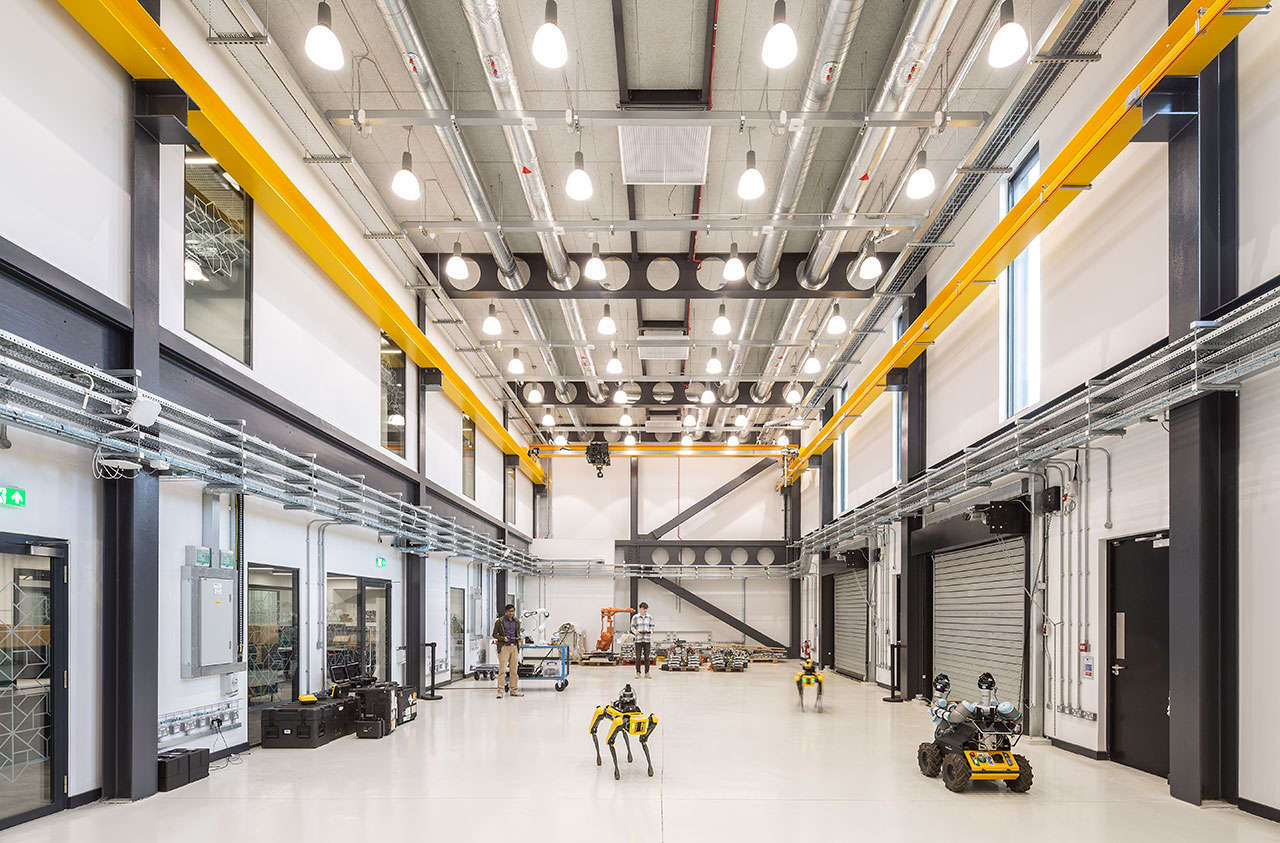
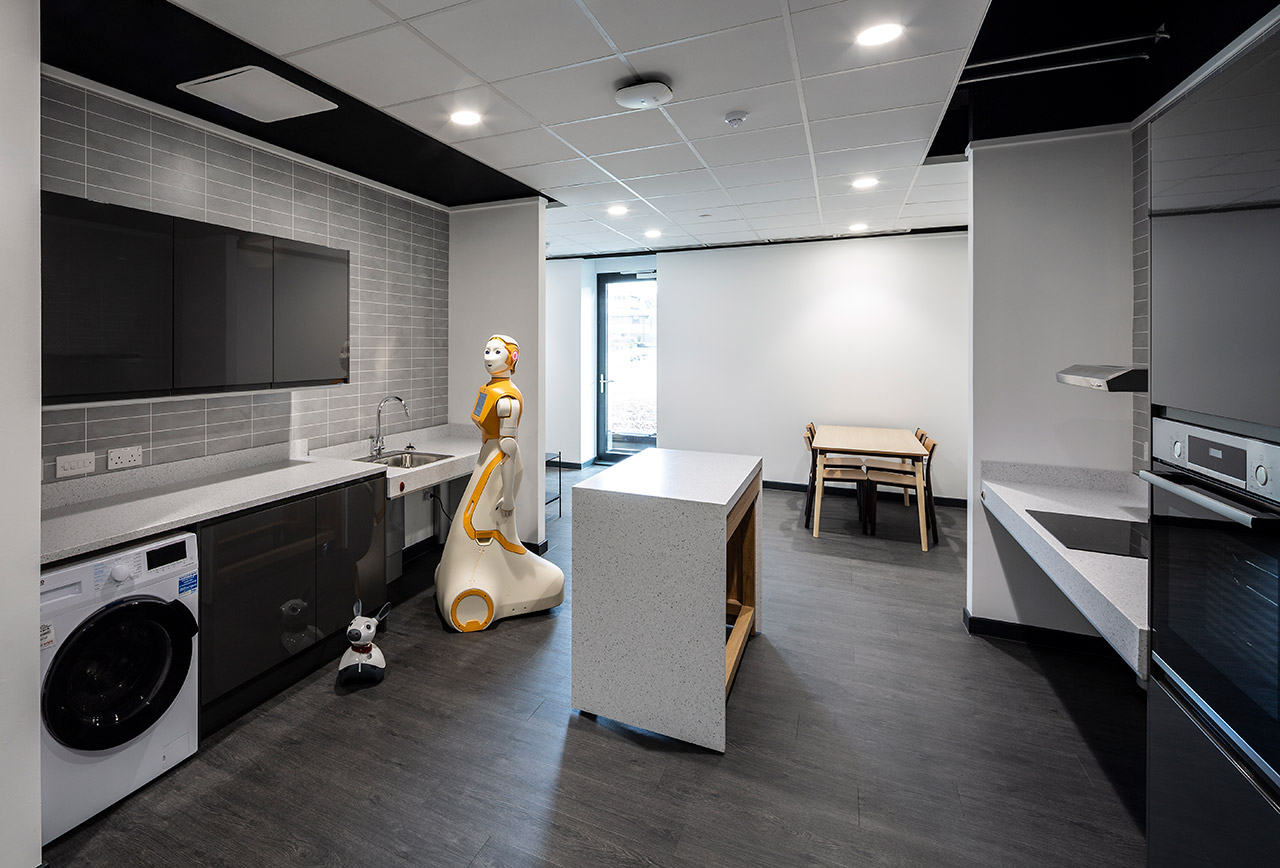
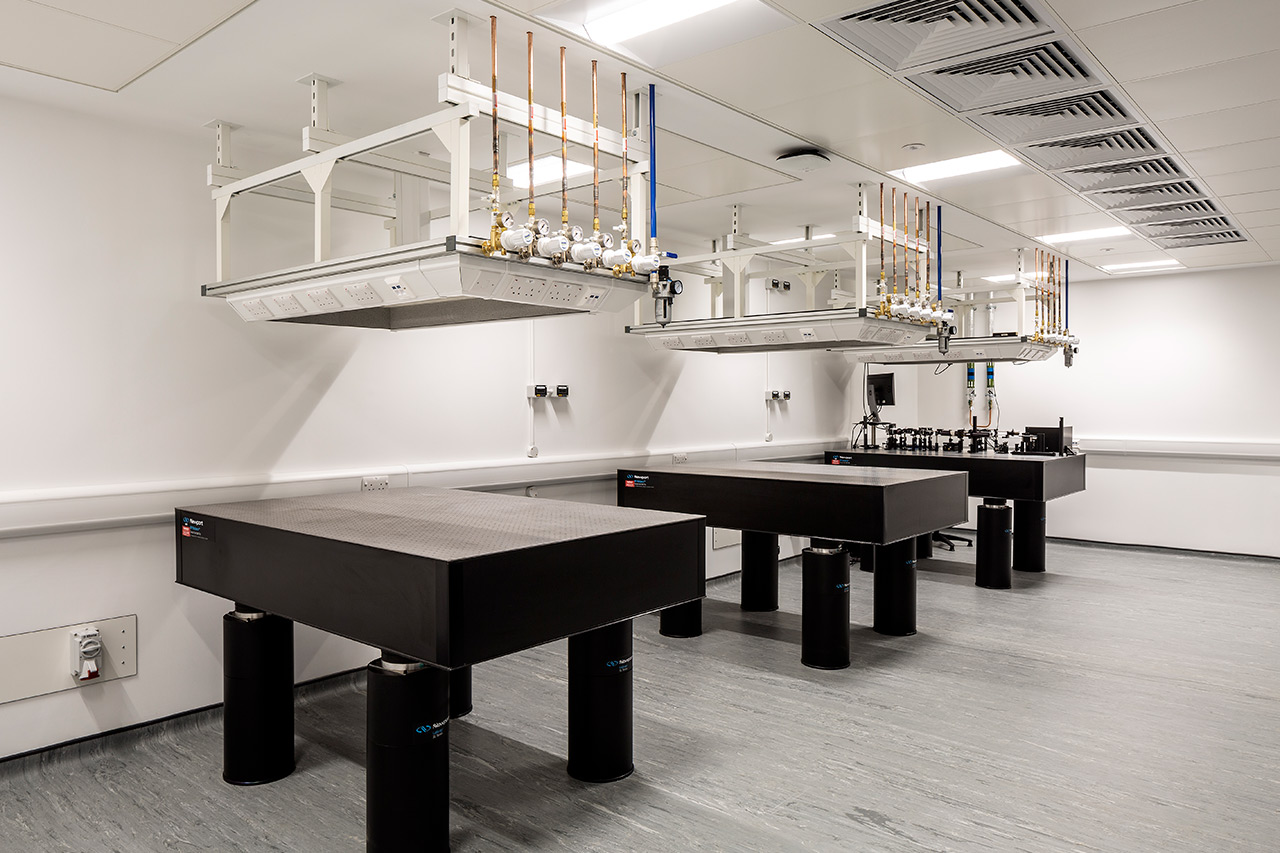
Sustainability at the Core
We used a “fabric first” approach to the envelope design, where airtightness and increased thermal performance reduce energy demand. The high-quality system envelope creates a contemporary and crisp aesthetic.
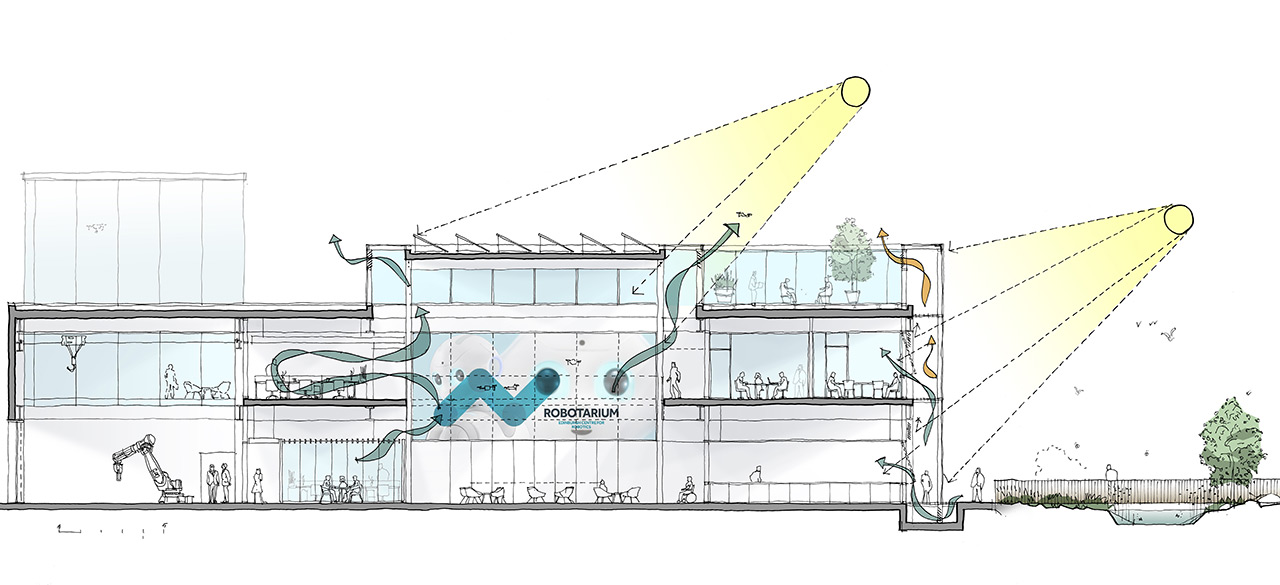
This pioneering facility deserved to have an innovative ‘shop window’ and symbolic presence to match. The vibrant, fully glazed double skin façade provides this, with both visual impact and sustainable properties. Integrated feature lighting and branding manifestations enhance this signature element to provide a unique and controllable appearance that makes the facility instantly recognisable, a destination within the University campus.
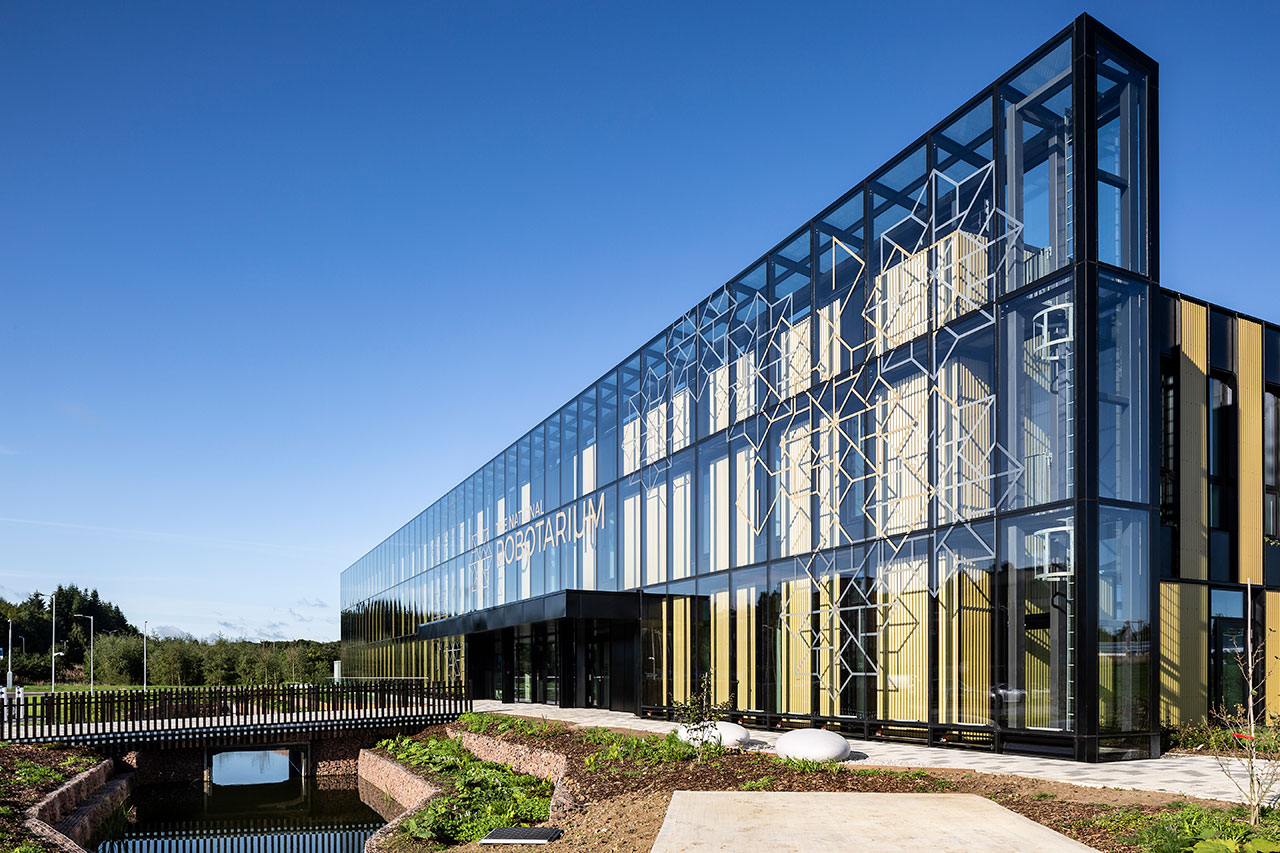
Potential Realised
Collaboration was the critical success factor for the project which is physically defined by the central Forum space. Providing physical and visual transparency and connectivity for all building users, the mix of space types and finishes complement the overall experience. The modern, industrial and digital work in harmony with the warmth of rich upholstery, natural planting, timber lined reception and auditorium spaces to provide a contemporary, timeless backdrop for new discoveries.
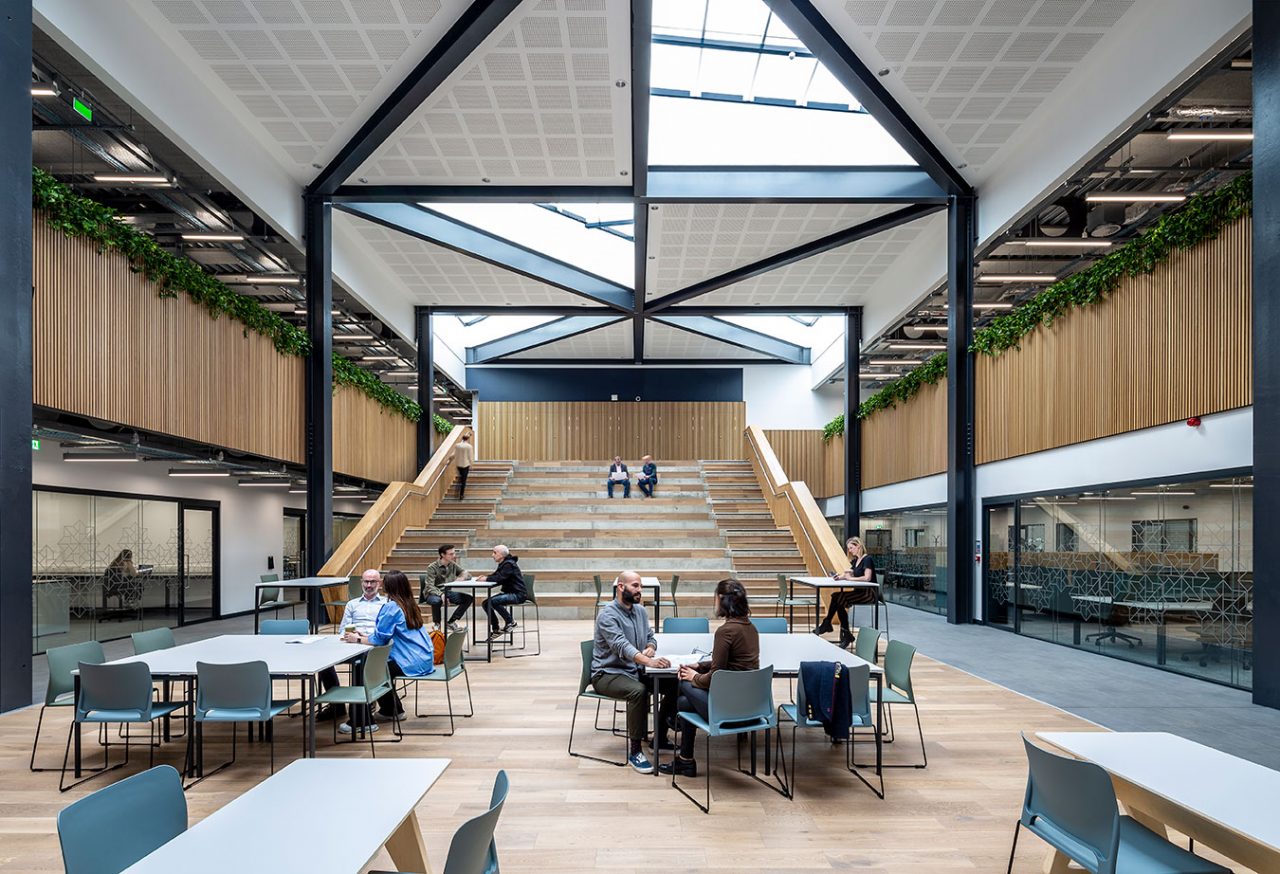
We are proud to have created a place where the industry is able to create, develop and test robotics for practical application that can have a real impact on our lives.
